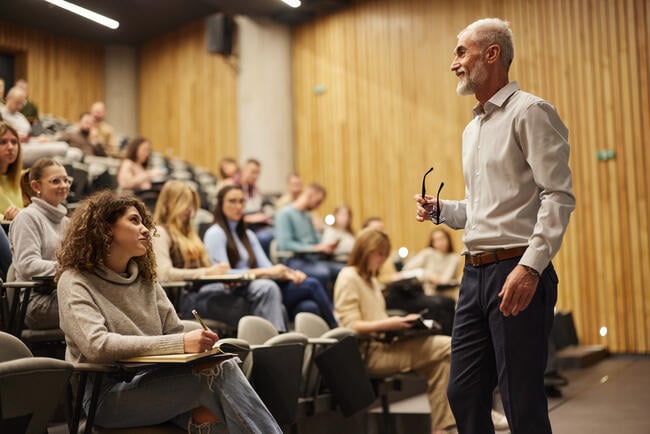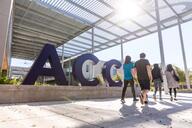You have /5 articles left.
Sign up for a free account or log in.

skynesher/E+/Getty Images
In American higher education, teaching is our business, research our currency and service our obligation. It has always perplexed me that the pursuit of higher education administration has traditionally compelled individuals to move away from a continued practice of two of these core faculty functions. The path of a faculty administrator is typically marked by a shift away from teaching and research, an evolution that makes returning to the faculty for some almost an impossibility, after years of being disconnected from the disciplinary practices that propelled their trajectory through the faculty ranks to secure an administrative role in the first place.
At Kennesaw State University, we are exploring a new approach to academic leadership that reverses this traditional model of administrative disconnect. Starting this past academic year, every senior academic administrator serving on the provost’s leadership team (including all deans) joined me (serving as provost) in a commitment to teaching or researching annually, with the goal of helping us better understand and serve our university community. For some, the move to formally carve out approximately 10 percent of their time for either teaching or research validates ongoing teaching and research practices, while for others, it provides administrative latitude to reignite their passion for teaching and/or research.
KSU’s president, Kathy Stewart Schwaig, co-taught an honors course with me this past spring, leading this strategy by example. President Schwaig, who holds a Ph.D. in information systems and whose leadership trajectory has evolved through faculty ranks across two Georgia institutions, takes this philosophical commitment to staying connected to the business of higher education even a step further, as she is currently enrolled as a graduate student at Dallas Theological Seminary pursuing a master’s in biblical and theological studies.
As Kennesaw State, a Carnegie-designated R-2 institution that serves a population of more than 47,800 students, some could see this strategy as a pragmatic way of extending the capacities of the senior academic administrators to serve the institution’s growing needs in research and teaching. At a time when the capacities of faculty colleagues are being optimized to serve one of the nation’s largest and fastest-growing public institutions, the members of the senior academic administrative team are committing to optimize their own collective capacities to serve the mission of the university.
The consequences will be more than just pragmatic, however. The annual commitment to serve as a higher education practitioner in addition to a higher education administrator could help us pursue administrative approaches that are rooted in a pragmatic understanding of both the shifting needs of industry and the changing needs of students entering higher education today. And it can also help build goodwill among faculty colleagues, who sometimes feel university administrators fail to fully comprehend the growing challenges of the classroom and pressures of research productivity.
Serving as provost, I have found my annual commitment to teaching an opportunity to inform administrative priorities. In fall 2020, when we struggled to comprehend how best to reopen and calibrate to the safety needs of the COVID pandemic, I was scheduled to teach a senior seminar course in the Department of Dance, while I served as dean of the College of the Arts at KSU. For a moment, I thought I should excuse myself from the added responsibilities of teaching a course at a time when my administrative capacities were being tested in rather unconventional ways. Better judgment prevailed, however, as I realized that out of every year that I continued to teach in my higher education career, this would be the semester when being in the classroom and experiencing the challenge alongside my faculty colleagues was most critical.
I would be lying if I said the experience was transformative. The challenges of lecturing with a face mask to socially distant students, split into two groups and separated by technology and physical space, was an experience that most faculty would likely agree was frustrating. But serving as dean and being in the classroom all semester allowed me to skip past several steps to serve the needs of my faculty colleagues with an understanding and empathy that was experientially relevant.
I am hoping that the impact of KSU’s administrative re-engagement strategy will be similarly impactful, ensuring that all senior academic administrators reignite their capacities to contribute to the teaching and research mission of the university. The idea seems to have been embraced at the outset by most; its sustainability, however, will require a continued institutional commitment and individual prioritization. While the true outcomes are yet to be empirically assessed, my hope is that this move will convert administrative faculty into faculty administrators, building their capacities to more effectively serve the growth of our institution with relevant, ongoing experiences in teaching and research.




